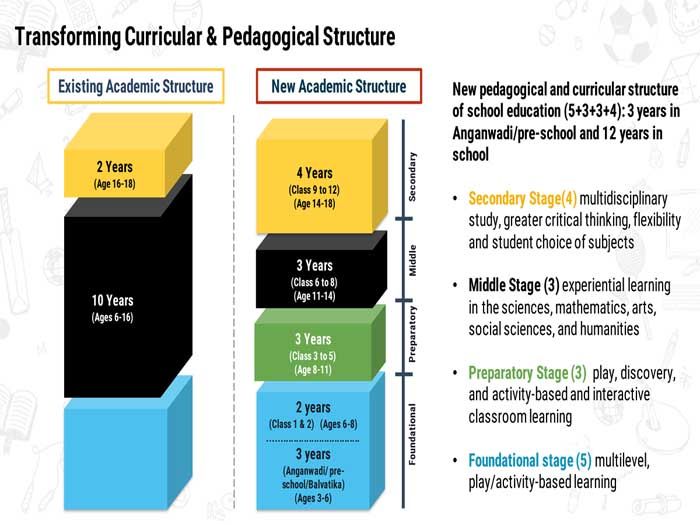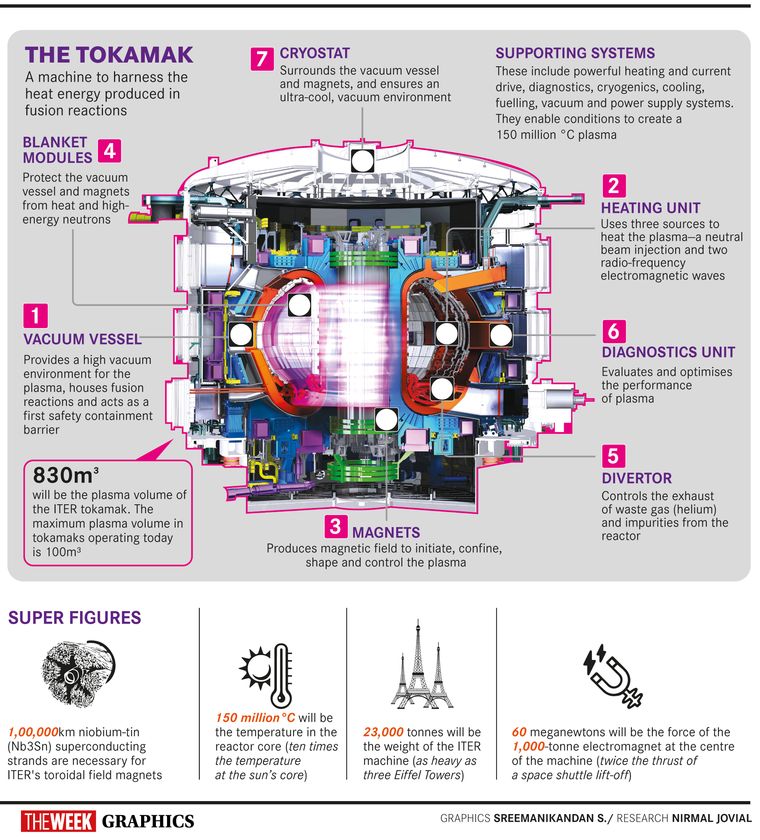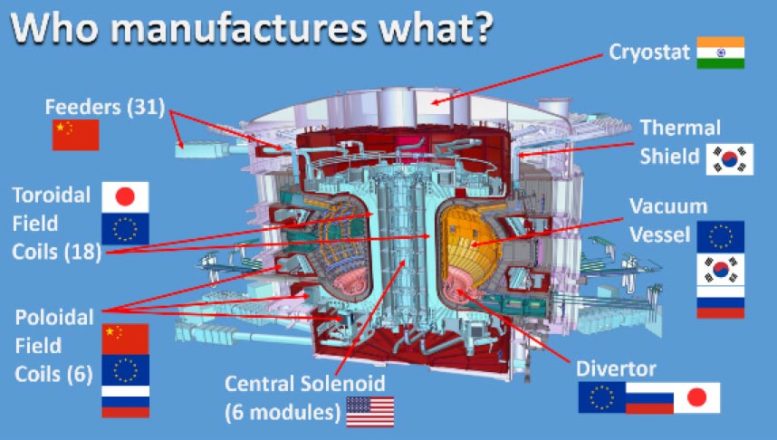Contents
- National Education Policy (NEP) 2020
- Start of Assembly of the ITER
- Namami Gange in PM’s Award
NATIONAL EDUCATION POLICY (NEP) 2020
Focus: GS-II Social Justice, Prelims
Why in news?
The Union Cabinet approved the National Education Policy 2020, making way for large scale, transformational reforms in both school and higher education sectors.
Significance
- This is the first education policy of the 21st century and replaces the thirty-four-year-old National Policy on Education (NPE), 1986.
- Built on the foundational pillars of Access, Equity, Quality, Affordability and Accountability, this policy is aligned to the 2030 Agenda for Sustainable Development and aims to transform India into a vibrant knowledge society and global knowledge superpower by making both school and college education more holistic, flexible, multidisciplinary, suited to 21st century needs and aimed at bringing out the unique capabilities of each student.
Important Highlights regarding School Education
I. Ensuring Universal Access at all levels of school education at all levels- preschool to secondary
- Providing infrastructure support, innovative education centres to bring back dropouts into the mainstream, tracking of students and their learning levels, facilitating multiple pathways to learning involving both formal and non-formal education modes etc.
II. Emphasis on Early Childhood Care and Education

- The 10+2 structure of school curricula is to be replaced by a 5+3+3+4 curricular structure corresponding to ages 3-8, 8-11, 11-14, and 14-18 years respectively. This will bring the hitherto uncovered age group of 3-6 years under school curriculum.
- NCERT will develop a National Curricular and Pedagogical Framework for Early Childhood Care and Education (NCPFECCE) for children up to the age of 8.
- The planning and implementation of ECCE will be carried out jointly by the Ministries of HRD, Women and Child Development (WCD), Health and Family Welfare (HFW), and Tribal Affairs.
III. Attaining Foundational Literacy and Numeracy
- NEP 2020 calls for setting up of a National Mission on Foundational Literacy and Numeracy by MHRD.
- States will prepare an implementation plan for attaining universal foundational literacy and numeracy in all primary schools for all learners by grade 3 by 2025.A
- National Book Promotion Policy is to be formulated.
IV. Reforms in school curricula and pedagogy
- The school curricula and pedagogy will aim for holistic development of learners by equipping them with the key 21st century skills, reduction in curricular content to enhance essential learning and critical thinking and greater focus on experiential learning.
- Students will have increased flexibility and choice of subjects.
- There will be no rigid separations between arts and sciences, between curricular and extra-curricular activities, between vocational and academic streams.
- A new and comprehensive National Curricular Framework for School Education, NCFSE 2020-21, will be developed by the NCERT.
V. Multilingualism and the power of language
- The policy has emphasized mother tongue/local language/regional language as the medium of instruction at least till Grade 5, but preferably till Grade 8 and beyond. Sanskrit to be offered at all levels of school and higher education as an option for students, including in the three-language formula.
- Indian Sign Language (ISL) will be standardized across the country, and National and State curriculum materials developed, for use by students with hearing impairment.
VI. Assessment Reforms
- NEP 2020 envisages a more competency-based formative assessment which promotes learning and development, and tests higher-order skills, such as analysis, critical thinking, and conceptual clarity.
- All students will take school examinations in Grades 3, 5, and 8 which will be conducted by the appropriate authority.
- Board exams for Grades 10 and 12 will be continued, but redesigned with holistic development as the aim.
- A new National Assessment Centre, PARAKH (Performance Assessment, Review, and Analysis of Knowledge for Holistic Development), will be set up as a standard-setting body.
VII. Equitable and Inclusive Education
- Emphasis on Socially and Economically Disadvantaged Groups (SEDGs) (gender, socio-cultural, and geographical identities and disabilities) along with setting up of Gender Inclusion Fund and also Special Education Zones for disadvantaged regions and groups.
- Every state/district will be encouraged to establish “Bal Bhavans” as a special daytime boarding school, to participate in art-related, career-related, and play-related activities. Free school infrastructure can be used as Samajik Chetna Kendras.
VIII. Robust Teacher Recruitment and Career Path
- Teachers will be recruited through robust, transparent processes and promotions will be merit-based.
- A common National Professional Standards for Teachers (NPST) will be developed by the National Council for Teacher Education by 2022.
IX. Standard-setting and Accreditation for School Education
- NEP 2020 envisages clear, separate systems for policy making, regulation, operations and academic matters. States/UTs will set up independent State School Standards Authority (SSSA).
Important Highlights regarding Higher Education
I. Increase GER to 50 % by 2035
- NEP 2020 aims to increase the Gross Enrolment Ratio in higher education including vocational education from just over 25% (2018) to 50% by 2035.
II. Holistic Multidisciplinary Education
- The policy envisages broad based, multi-disciplinary, holistic Under Graduate education with flexible curricula, creative combinations of subjects, integration of vocational education and multiple entry and exit points with appropriate certification.
- An Academic Bank of Credit is to be established for digitally storing academic credits earned from different (Higher Education Institutions) HEIs.
- Multidisciplinary Education and Research Universities (MERUs), at par with IITs, IIMs, to be set up.
- The National Research Foundation will be created as an apex body for fostering a strong research culture and building research capacity.
III. Regulation
- Higher Education Commission of India (HECI) will be set up as a single overarching umbrella body the for entire higher education (excluding medical and legal).
IV. Rationalised Institutional Architecture
- Higher education institutions will be transformed into large, well resourced, vibrant multidisciplinary institutions providing high quality teaching, research, and community engagement.
V. Teacher Education
- A new and comprehensive National Curriculum Framework for Teacher Education, NCFTE 2021, will be formulated by the NCTE.
VI. Financial support for students
- Efforts will be made to incentivize the merit of students belonging to SC, ST, OBC, and other SEDGs.
- The National Scholarship Portal will be expanded to support, foster, and track the progress of students receiving scholarships.
VII. Open and Distance learning, Online/Digital Education
- Measures such as online courses and digital repositories, funding for research, improved student services, credit-based recognition of MOOCs, etc., will be taken to ensure it is at par with the highest quality in-class programmes.
- A comprehensive set of recommendations for promoting online education consequent to the recent rise in epidemics and pandemics.
- An autonomous body, the National Educational Technology Forum (NETF), will be created to provide a platform for the free exchange of ideas on the use of technology.
VIII. Promotion of Indian languages
- NEP recommends setting an Indian Institute of Translation and Interpretation (IITI), National Institute (or Institutes) for Pali, Persian and Prakrit, strengthening of Sanskrit and all language departments in HEIs.
START OF ASSEMBLY OF THE ITER
Focus: GS-III Science and Technology, GS-II International Relations
Why in news?
The ITER Organization is celebrating the Start of Assembly of the ITER Tokamak with a ceremony.
Highlights of Indian PM’s message
- ITER and global participation of scientists and engineers are a perfect illustration of the age-old Indian belief – Vasudhaiva Kutumbakam – the entire world is working together for the betterment of Mankind.
- India stands proud with its fair share of contributions in terms of its in-kind contributions, viz., the cryostat, in vessel shields, substantial contributions to the cooling water, cryogenic and cryo-distribution systems, auxiliary heating devices using RF and beam technologies, multi megawatt power supplies and several diagnostics to help ITER.
International Thermonuclear Experimental Reactor (ITER)
- International Thermonuclear Experimental Reactor (ITER) is an international nuclear fusion research and engineering megaproject, which will be the world’s largest magnetic confinement plasma physics experiment.
- It is an experimental tokamak nuclear fusion reactor that is being built next to the Cadarache facility in Saint-Paul-lès-Durance, in Provence, southern France.
- The goal of ITER is to demonstrate the scientific and technological feasibility of fusion energy for peaceful use.
- The machine aims to demonstrate, for the first time in a fusion reactor, the principle of producing more thermal power than is used to heat the plasma.

The project is funded and run by seven member entities—
- European Union,
- China,
- India,
- Japan,
- Russia,
- South Korea,
- The United States.

NAMAMI GANGE IN PM’S AWARD
Focus: GS-III Environment and Ecology, Governance
Why in news?
The Namami Gange project has been included in the prestigious ‘Prime Minister’s Awards for Excellence in Public Administration 2020’.
Benefits of Namami Gange: Reasons for Nomination
- Economic activities are also benefiting from the efforts of the 26 District Ganga Committees of Uttar Pradesh.
- There, has been a big change in the cleanliness of the Ganga and in the rejuvenation efforts.
- Organic farming and development of biological diversity along the banks of the Ganga will increase the means of employment at the local level.
- Apart from on the contours of Arth Ganga so that a sustainable socioeconomic zone is developed around the Ganga and its tributariesz Nirmalta’ and ‘Aviralta’ of the Ganga, work is also being done on the contours of Arth Ganga so that a sustainable socioeconomic zone is developed around the Ganga and its tributaries.
- It has brought awareness among the people, due to which now public participation is increasing not only in the areas along the Ganga but also in the cleanliness of other rivers.
- The migrant workers returning home during the lockdown were linked to the renovation of river-ponds through the Mahatma Gandhi National Employment Guarantee Act (MGNREGA), benefiting local economy and preserving natural sources for storing monsoon water.
- Due to renovation of the river Karnavati, a tributary of Ganga in Mirzapur district, it will now flow throughout the year. The socio-economic model being implemented will greatly benefit areas along the banks of Karnavati.
- At the same time, the Sai river of Hardoi district which meets Gomti has been revived with the help of migrant workers.
Prime Minister’s Awards for Excellence in Public Administration
- Government of India has instituted a scheme, “Prime Minister’s Awards for Excellence in Public Administration” – to acknowledge, recognize and reward the extraordinary and innovative work done by Districts/ organizations of the Central and State Governments.
- The awards are given every year for Excellence in implementing identified Priority Programmes of Government of India and extraordinary and innovative work done by the Organizations of Central/ State Governments/ Districts in public governance.
- Two awards shall also be given to Organizations of Central/ State Governments / Districts for Innovations in environment conservation, disaster management, water conservation, energy, education and health, women and child centric initiatives etc., of which one shall be given for innovations by Aspirational districts, under the Aspirational Districts Programme (ADP).




